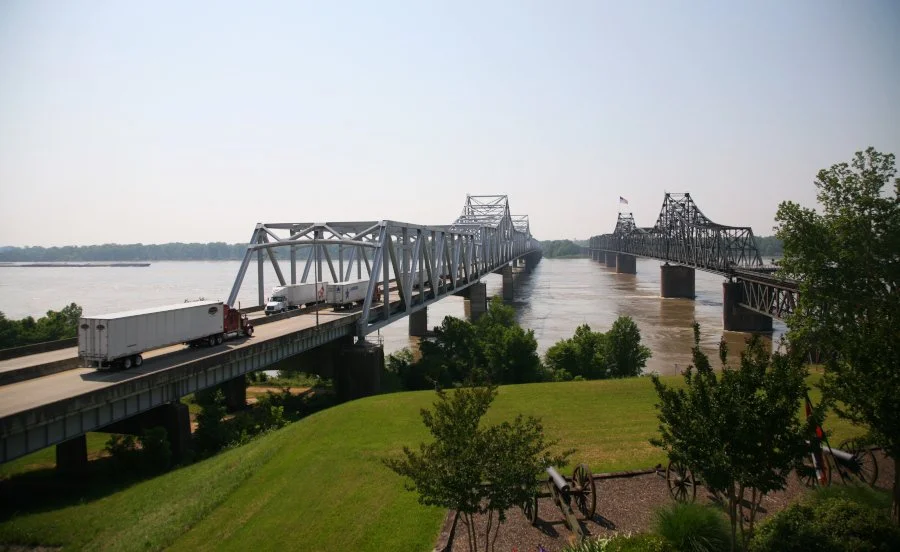Mayors of cities and towns along the Mississippi River say commerce will be affected by Francis Scott Key Bridge collapse
Mississippi River bridges that were built in the time frame or earlier than the recently collapsed Francis Scott Key Bridge in Baltimore should be evaluated for their vulnerability to a vessel collision, mayors of cities and towns along the river said.
Norma Jean Mattei, past president of the American Society of Civil Engineers, also made that assessment March 28, participating in a press conference hosted by The Mississippi River and Towns Initiative, a coalition of over 100 mayors along the Mississippi River from Minnesota to Louisiana,
The Key Bridge, which was built in 1977, was struck by a container ship and fell into the Patapsco River on March 26.
Mattei cited several bridges that may need evaluation: the Vicksburg Bridge in Mississippi, which was built in 1930; the Crescent City Bridge in New Orleans, which opened in 1938; the Huey P. Long Bridge in Jefferson Parish La., which dates to 1935; and the Hale Boggs Memorial Bridge in St. Charles Parish, La., which opened in 1983.
She said a requirement that bridges be assessed for their risk of a possible vessel collision was not required of new bridges until 1991.
“A lot of our crossings [on the Mississippi] are older and may never have had a full-blown vessel collision assessment –so that’s a lesson learned,” she said.
While not all bridges will need to be assessed, Mattei said intervals at which some should be assessed and triggers, such as a change in the frequency or type of river traffic, should be established.
“A trigger might be an increase in vessel traffic or in the size or types of vessels,” she said. “We should look at those bridges where larger vessels may be passing compared to what we are used to seeing.”
Mattei noted that the Mississippi River does not generally see transit of the type of massive container ship that collided with the Key Bridge. However, as ENR reported in 2022, a $238-million effort to deepen the lower river is underway and will allow larger “Post Panamax” shipping vessels to use the waterway and access ports in that area.
The term “Post Panamax” refers to the 2016 expansion of the Panama Canal that created new locks to accommodate large ships.
Mattei noted that other factors, such as the velocity of the river’s waters, also could play a role in an assessment and in vessels coming into contact with a bridge.
Colin Wellenkamp, executive director of the mayors' group, said $40 billion of the Bi-Partisan Infrastructure Law is targeted for bridges and “one of the priorities" is resilience.
“There are needs here and there are resources being pushed out,” he says. “This is an opportunity to analyze risks and assess risks.”

